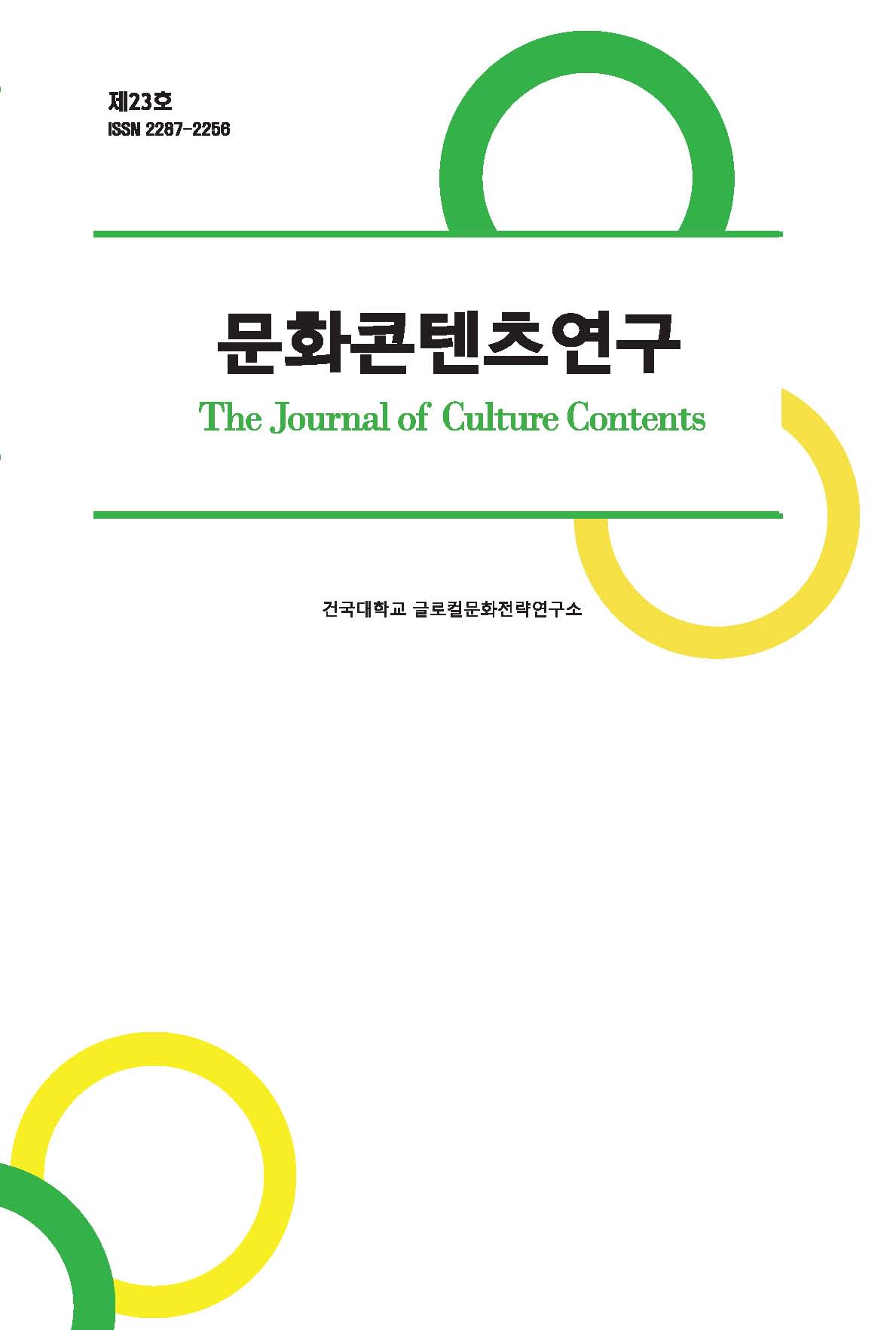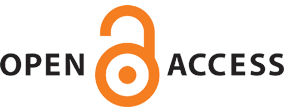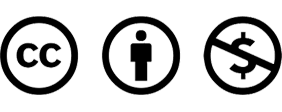Abstract
References
Information
This study explores how the storytelling of the ill body and its embodied experiences is represented in young women’s vlogs about their illnesses, and analyzes the ways in which the self is reconstructed through the performances. The plight of the body through illness threatens the continuity and unity of life. The sensations, pains and incomprehensible suffering of the body, to which they pay no attention when they are healthy, overwhelm their lives. However, ill bodies (re)organize their lives into stories, giving order and meaning to the unpredictable events that illness brings. Vloggers recall past experiences of living with the illness and reinterpret these experiences in the present to create meaning and direction in their lives. Their stories are not linear or structured. The story is often interrupted by the constant discord with the ill body, and it is fragmentary. Nevertheless, the vloggers try to understand more about their bodies and lives, which have been changed and transformed by the illness. They also struggle to find figurative words and metaphors to adequately express their experiences. Vloggers plan, shoot, and edit their own videos and use their vlogs as a space for self-expression and authenticity. They gain self-esteem through their efforts to tell their audiences about their ordinary lives and life orientation with the illness and to take responsibility for their stories. This study analyzes these processes as performative practices in which vloggers actively construct their identities in order to live in symbiosis with their ill bodies.
본 연구는 젊은 여성들의 투병 브이로그에서 아픈 몸과 체현의 언어가 발화되는 양상을 쫓아 이를 통해 자아가 재구성되는 측면을 살핀다. 질병으로 인한 몸의 곤경과 변화된 일상은 삶의 지속성과 통일성에 위협적인 요소로 작용한다. 건강할 때는 주의를 기울이지 않았던 몸의 감각과 통증, 불가해한 고통은 때때로 삶 전체를 압도한다. 그러나 아픈 몸들은 질병이 가져오는 예측 불가능한 사건들에 질서와 의미를 부여하며 자신의 삶을 이야기로 구성해나간다. 브이로거들은 ‘이야기하기(stoytelling)’를 통해 질병과 함께 살아온 과거의 경험을 회고하고, 현재의 시점에서 그 경험을 재해석하며 삶의 의미와 방향을 만들어 나간다. 이들의 이야기는 선형적이거나 구조적이지 않다. 계속되는 몸과의 불화로 이야기는 종종 중단되고 내용은 파편적이다. 그럼에도 브이로거들은 질병으로 인한 변화된/변화 중인 몸과 삶을 응시하며 그 경험을 적절하게 표현할 수 있는 비유의 언어를 발굴한다. 또한 브이로거들은 영상 기획과 촬영, 편집 등을 직접 수행하며 브이로그를 자기표현의 공간으로 의미화한다. 시청자들에게 질병과 살아가는 보통의 일상과 삶의 지향을 이야기하고, 그 이야기에 대해 책임지려는 노력을 통해 자기 존중감을 획득해나간다. 본 연구는 이러한 과정을 브이로거들이 아픈 몸과 공생하기 위해 자신의 정체성을 능동적으로 구성하는 수행적 실천으로 분석한다.
- 김애령, 『은유의 도서관』, 그린비, 2013.
- 김영옥·메이·이지은·전희경, 『새벽 세 시의 몸들에게- 질병, 돌봄, 노년에 대한 다른 이야기』, 봄날의책, 2020.
- 김한식, 『해석의 에움길』, 문학과지성사, 2019.
- 다리아·모르·박목우·이혜정, 『질병과 함께 춤을』, 파주숲, 2021.
- 리단, 『정신병의 나라에서 왔습니다: 병과 함께 살아가는 이들을 위한 안내서』, 반비, 2021.
- 박지니, 『삼키기 연습: 스무 해를 잠식한 거식증의 기록』, 글항아리, 2021.
- 양유성, 『이야기치료: 이야기를 통한 인간 이해와 심리치료』, 학지사, 2004.
- 정지음, 『젊은 ADHD의 슬픔』, 민음사, 2021.
- 정혜욱, 『문화 번역과 주디스 버틀러의 이론적 프레임』, 도서출판3, 2020.
- 조한진희, 『아파도 미안하지 않습니다』, 동녘, 2019.
- 하미나, 『미쳐있고 괴상하며 오만하고 똑똑한 여자들』, 동아시아, 2021.
- 수잔 손택, (lliness as Metaphor), 이재원, 『은유로서의 질병』, 이후, 2002.
- 아서 프랭크, (The Wounder Storyteller: Body, Illness, and Ethics), 최은경, 『몸의 증언』, 갈무리, 2013.
- 앤서니 기든스, (Modernity and Self-identity: Self and Society in the Late Modern Age), 권기돈, 『현대성과 자아정체성』, 새물결, 1997.
- 멜러니 선스트럼, (The Pain Chronicles: Cures, Myths, Mysteries, Prayers, Diaries, Brain Scans, Healing, and the Science of Suffering), 노승영, 『통증연대기: 은유, 역사, 미스터리, 치유 그리고 과학』, 에이도스, 2011.
- 찰스 테일러, (Malaise of modernity), 송영배, 『불안한 현대사회: 자기중심적인 현대 문화의 곤경과 이상』, 이학사, 2001.
- 폴 리쾨르, (Soi-même comme un autre), 김웅권, 『타자로서 자기 자신』, 동문선, 2006.
- 폴 리쾨르, (Temps et Récit- tome 1, L'intrigue et le récit historique), 김한식·이경래, 『시간과 이야기 1: 줄거리와 역사 이야기』, 문학과지성사, 1999.
- 폴 리쾨르, (Temps et Récit- tome 3 Le Temps raconté), 김한식, 『시간과 이야기 3: 이야기된 시간』, 문학과지성사, 2004.
- 한나 아렌트, (The Human Condition), 이진우·태정호, 『인간의 조건』, 한길사, 1996.
- 곽선혜, 「SNS를 활용한 자기표현과 관계맺기 전략에 대한 연구」, 경희대학교 대학원 박사학위 논문, 2016.
- 김향수, 「만성통증 질병서사를 통해 본 젠더화된 질병 체험과 자아 전략」, 서울대학교 대학원 박사학위 논문, 2020.
- 이유림, 「정서적 고통의 의미와 우울의 사회적 구성: 20대 ‘명문대’ 여성의 정서적 고통과 우울증 경험에 대한 분석」, 연세대학교 대학원 석사학위 논문, 2015.
- 전하나, 「테일러의 진정성의 윤리에 관한 연구」, 전남대학교 대학원 석사학위 논문, 2016.
- 정지영, 「중산층 경력단절 여성의 모성역할 학습에 관한 연구」, 서울대학교 대학원 석사학위 논문, 2016.
- 김애령, 「서사 정체성의 구성적 타자성」, 『해석학연구』 제36호, 한국해석학회, 2015.
- 김예란, 「플랫폼 생산자와 일상성 : 일상 브이로거의 삶과 노동」, 『한국언론정보학보』 제101호, 한국언론정보학회, 2020.
- 김유석·이승하, 「서사적 정체성의 현대적 의의」, 『인문과학연구』 제29호, 강원대학교 인문과학연구소, 2011.
- 김은정·오경자·하은혜, 「기혼 여성의 우울증상에 대한 취약성- 스트레스 경험 및 대처과정을 중심으로」, 『한국심리학회지: 여성』 제4권 1호, 한국여성심리학회, 1999.
- 김한식, 「살아있는 은유 또는 은유의 물러남- 리쾨르와 데리다의 은유 논쟁」, 『불어불문학연구』 제119권, 한국불어불문학회, 2019.
- 유봉근, 「테크놀로지 시대의 퍼포먼스 연구: 일상화된 퍼포먼스 또는 퍼포먼스의 일상화를 중심으로」, 『유럽사회문화』 제16호, 유럽사회문화연구소, 2016.
- 이선형, 「예술치료를 위한 ‘은유’의 개념과 기능에 대한 소고」, 『드라마연구』 제37호, 한국드라마협회, 2012.
- 이연정, 「여성의 시각에서 본 ‘모성론’」, 『여성과 사회』 제6호, 한국여성연구소, 1995.
- 이해수, 「디지털 스토리텔링의 재조명: 암 환자들의 유튜브 투병 브이로그를 중심으로」, 『미디어, 젠더 & 문화』 제36권(제1호), 한국여성커뮤니케이션학회, 2021.
- 이해수, 「아픈 몸들의 일상 문화정치: 유튜브 브이로그에서 나타난 질병인의 몸말 실천 연구」, 『문명과 경계』 제6호, 포항공과대학교 융합문명연구원, 2023.
- 장윤원, 「20-30대 여성들의 온라인 우울증 말하기와 페미니스트 내러티브」, 『한국여성학』 제37권(제3호), 한국여성학회, 2021.
- 장현미·김은미·이준웅, 「블로그에서 자기표현적 글쓰기와 읽기 선호도가 대인적 및 사회적 신뢰에 미치는 영향에 관한 연구: 블로그에서 공감경험의 매개적 효과를 중심으로」, 『한국언론학보』 제56권(제2호), 2012.
- 조영한, 「인터넷과 민속지학적 수용자 연구 인터넷 에스노그라피의 가능성과 과제」, 『미디어, 젠더 & 문화』 제21호, 한국여성커뮤니케이션학회, 2012.
- 최미경·나은영, 「블로그 이용자의 자기표현이 심리적 안녕감에 미치는 영향: 지각된 상호작용성의 매개효과를 중심으로」, 『한국언론학보』 제59권(제4호), 2015.
- 홍세인·정윤혁, 「유튜브 ‘투병 브이로그’ 콘텐츠 시청행태에 대한 연구: 라포(Rapport)를 중심으로」, 『사회과학연구』 제62권(제3호), 강원대학교 사회과학연구원, 2023.10.22418/JSS.2023.12.62.3.129
- 황임경, 「질병 체험과 서사」, 『의철학연구』 제10권, 한국의철학회, 2010.
- Brooks, P.,
Reading for the Plot: Design and Intention in Narrative , Harvad University Press. 1984, p.xii. - Butler, J.,
Giving an Account of Oneself , Fordham University Press, 2005.10.5422/fso/9780823225033.001.0001 - Goffman, E.,
The presentation of self in everyday life , A double day Anchor, 1959. - Lara, M. P.,
Moral Textures: Feminist Narratives in the Public Sphere , Polity, 1998. - Farren, K. M., “Narrative identity in Paul Ricoeur and Luce Irigaray: The Circularity between Self and Other”, Unpublished Ph.D. Thesis, Michigan Technological University, 2010.
- Hammersley, M., “Ethnography and discourse analysis: incompatible or complementary?”,
Polifonia 10, Austin Peay State University, 2005. - Schües, C., Olkowski, D., & Fielding, H.,
Time in Feminist Phenomenology . Indiana University Press, 2011. - Zola, I. K., “Medicine as an Institution of Social Control”,
Sociological Review 20(4), SAGE Publications, 1972.10.1111/j.1467-954X.1972.tb00220.x
- Publisher :Research Institute of Creative Contents
- Publisher(Ko) :글로컬문화전략연구소
- Journal Title :The Journal of Culture Contents
- Journal Title(Ko) :문화콘텐츠연구
- Volume : 31
- Pages :7~52
- DOI :https://doi.org/10.34227/tjocc.2024..31.7



 The Journal of Culture Contents
The Journal of Culture Contents





